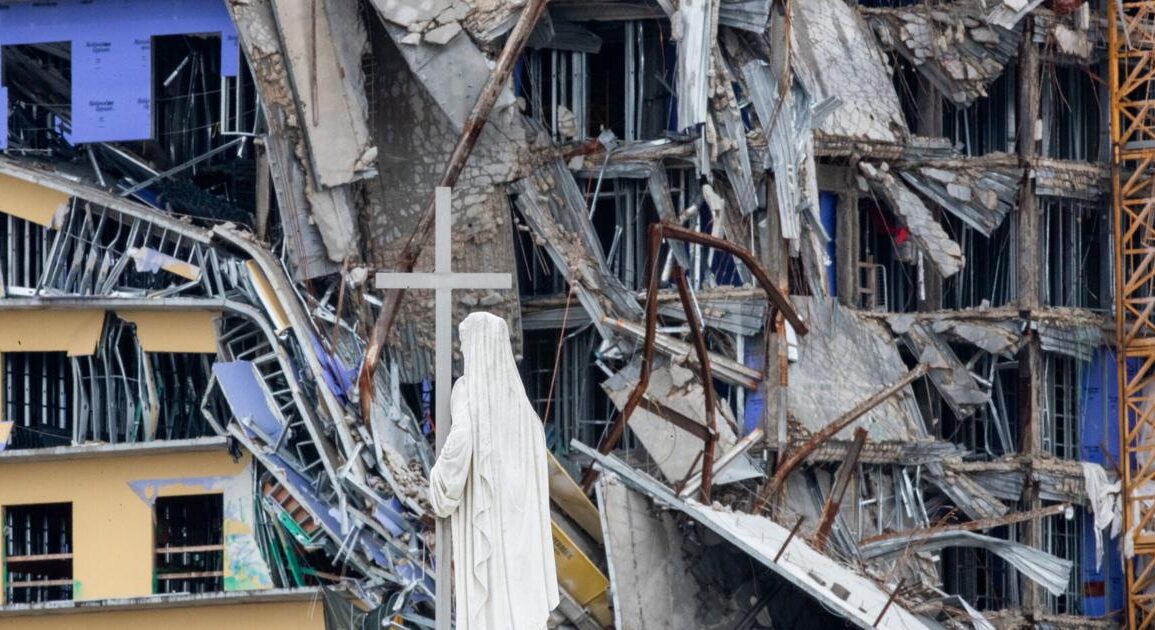
A state grand jury on Thursday voted against issuing indictments in the catastrophic Hard Rock Hotel collapse four years ago, essentially ending a two-year criminal investigation by Orleans Parish District Attorney Jason Williams.
The decision came during the grand jury’s last scheduled meeting before the deadline to file criminal charges. The fourth anniversary of the high-rise tragedy is Thursday, Oct. 12. State law gives prosecutors four years to file gross negligence charges.
Williams chose to have the case go to a grand jury rather than filing charges himself. The grand jury returned a “no true bill,” meaning at least nine jurors decided there wasn’t enough evidence to hold someone liable for the calamity, which killed three.
“Unfortunately, criminal negligence carries a much higher burden than civil negligence, and upon deliberating, the jurors decided there simply wasn’t enough certainty to proceed,” Williams’ office wrote a statement.
The top three floors of the Hard Rock pancaked together along the Rampart Street side of the structure, crushing workers Anthony Magrette, Quinnyon Wimberly and Jose Ponce Arreola. The collapse also injured more than a dozen others, damaged surrounding properties and shut down a major downtown intersection for more than a year.
Angela Magrette, the sister of Anthony Magrette, said she felt like she’d been “punched in the gut” by the news.
“I trusted and believed in Jason Williams and the New Orleans justice system,” she said. “I believed and I hoped and I prayed. I should have known, though. I was told by many people nothing was going to happen. But I didn’t want to believe that.”
“We didn’t put our thumb on the scale,” Williams said. “This is about what we can prove in court, which is why we went through the grand jury process and why we showed them everything that we would be able to show in court.”
Frank Wimberly Jr., whose brother Quinnyon died in the catastrophe, said Williams and his team of prosecutors warned the families the grand jury could vote to not indict anyone.
“I can’t continue to move on in anger and things of that nature because it will affect us,” he said. “It’s not going to get us anywhere. But yes, I am disappointed, and I need the world to know that.”
Crews had just poured heavy concrete on the 18th floor rooftop a week before the collapse and were removing temporary shoring poles, which provided extra stability while concrete cured, in the hours leading up to the disaster. A review of internal project documents found the property owner, 1031 Canal Development and lead developer Mohan Kailas, had requested changes to the building’s design, including higher ceilings on the top floors and steel columns that weren’t lined up with the ones below the 16th floor.
An attorney for Kailas said his ownership team relied on professionals, including lead engineer Heaslip Engineering and steel provider Hub Steel, “to determine the means and methods to safely construct the building, including specifying the size and type of all beams, columns and connections.”
In May 2020, the federal Occupational Safety and Health Administration fined Heaslip’s Metairie-based firm $154,000 for “willful” and “serious” safety violations for “inadequately designed … steel connections” and “design flaws” on the top three stories of the high-rise.
OSHA also cited Hub Steel, for “failing to maintain the structural stability of the building” and several other contractors for minor violations.
Williams’ office said OSHA seemed to prioritize the civil proceedings over the criminal investigation.
“They effectively obstructed our work by withholding a report containing information critical to our review,” the office wrote. “OSHA’s refusal to turn over all evidence and reports in their control was extremely harmful to our presentation.”
Heaslip has repeatedly denied any wrongdoing and has been contesting the OSHA violations for the last three and a half years.
In October 2021, WWL-TV reviewed a copy of a secret OSHA engineer’s report that blamed Heaslip for what it called “grossly underdesigned” steel beams used to support the top three floors of the building. It said 81 of those beams were too small to support the load on the floors above, where heavy concrete had been poured and temporary supports were seen bending under the pressure just days before the disaster. The OSHA report said the collapse was “waiting to happen.”
Last week, a final settlement conference between Heaslip and OSHA was held at the U.S. Customs House in New Orleans. Heaslip declined to comment last week, and his attorney did not respond last Friday when asked about the result of those talks.
Neither did OSHA. The agency’s website on Thursday afternoon still showed the violations against Heaslip as “contested,” with no final order issued.
This post was originally published on this site be sure to check out more of their content.







